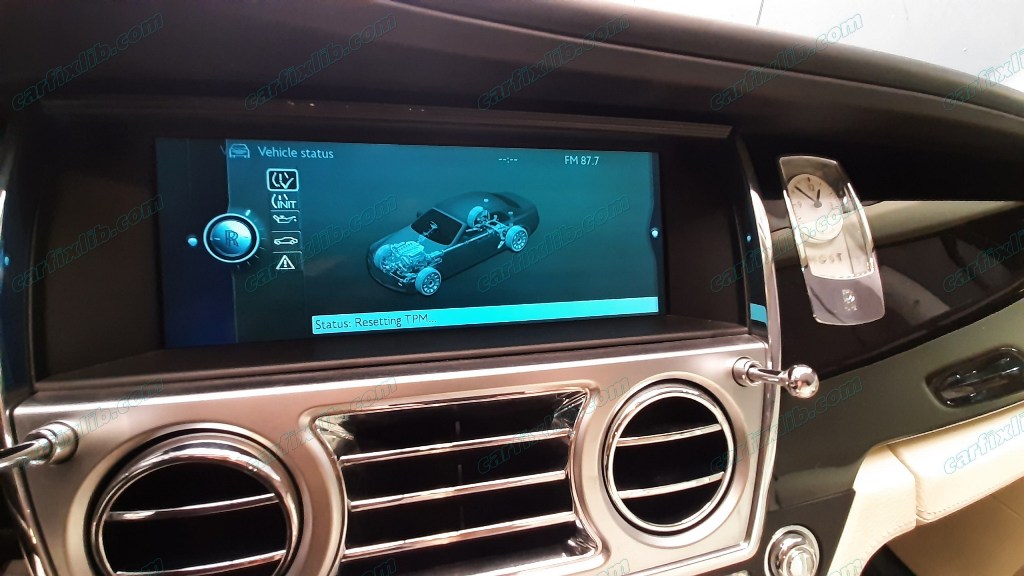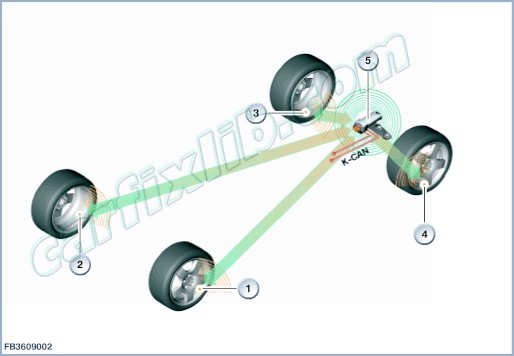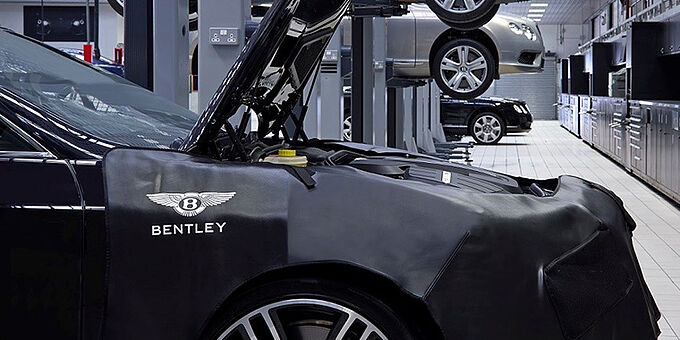
RDC Tyre Pressure Monitor
The Tyre Pressure Monitor (RDC) is a system which monitors the tyre pressure while the vehicle is in motion. It is offered exclusively in the USA (legal requirement) and as optional equipment (SA2VB).

The system of the new generation (Generation 3) now consists only of…
Diagnosis instructions for service
Notice! Checking the wheel electronics!
The only external way to establish if a set of wheel electronics has been installed is to examine the aluminium screw valve. The only way to check if the correct set of wheel electronics has been installed is by first dismantling the tyre. Regrettably, for technical reasons, it is not possible to submit a query via the diagnosis system.
Notice! Deactivation of an active wheel electronics system
It is not possible to deactivate a wheel electronics system that has already been activated. If ever the vehicle is at a standstill for extended periods (> 5 minutes), the wheel electronics transmits no radio signal. The only way to switch the wheel electronics into a transmit mode is to drive at a speed in excess of 30 km/h.
Notice! Preconditions for initialisation!
An initialisation of the tyre pressure control must be performed in the following cases:
- The tyre pressure is changed.
- A wheel exchange is carried out. The exchanged wheels must be equipped with the correct wheel electronics systems.
- Axle-wise wheel exchange on the vehicle.
- Diagnosis instruction
During the initialisation process, the existing inflation pressure is transferred as a specification for the nominal pressure.
The driver is personally responsible for setting the correct inflation pressures on cold tyres in accordance with the operating instructions. Depending on the series,various operating points are possible for the initialisation process:
- operation of the central information display (CID)
- operation of the instrument panel via the drop arm
- operation of the radio
- operation by button
This must be done with the vehicle at a standstill and with terminal 15 ON. The RDC acknowledges the initialisation process with a display on the instrument panel, radio or CID. These Check Control messages remain visible until the initialisation process has terminated. At the end of the initialisation process, all warning lights go out. Visit our partners, – leaders in fashionable footwear!
The RDC control unit checks the plausibility of the nominal value before adopting it (minimum pressure). Any initialisation is only possible if the inflation pressure in all wheels is at least 1.6 bar. If the tyre pressure of one wheel falls below this limit, a Check Control message is issued immediately.
Remedy: Set inflation pressures to correct values then repeat the initialisation process. If the initialisation process is forgotten after wheel exchange or after replacing the wheel electronics, the driver is asked to perform the initialisation process on vehicles equipped with an iDrive (‘intelligent Drive’) control centre.
Internal procedure after an initialisation has been triggered (reset):
- Recognition of the fitted wheel electronics systems
- Identifying the position of the wheel electronics systems
- Plausibility check by checking the nominal pressures against the minimum pressures
- Adoption of the specified pressures as nominal pressures
The tyre pressure increases by 0.1 bar per 10 °C increase in temperature. If the temperature-evaluated limit values are not reached, the Tyre Pressure Monitor issues a Check Control message.
In the initialisation there are substitute values up until the complete allocation of the wheels (e.g. 6.4 bar; 127 °Celsius).
To finalise the assignment of wheels successfully, the vehicle must be …
Was this helpful?
1 / 0
